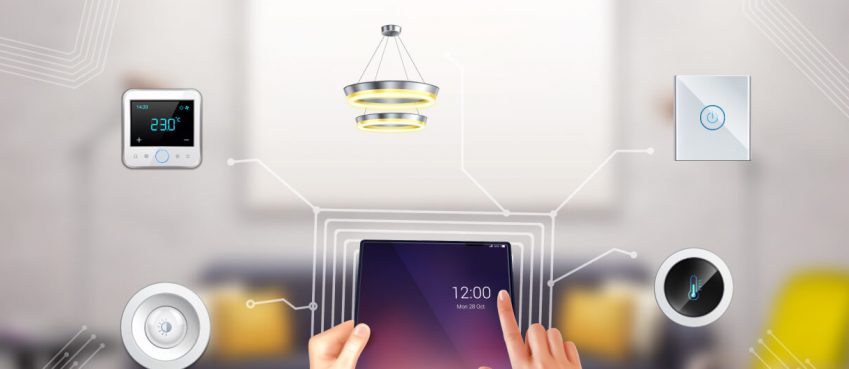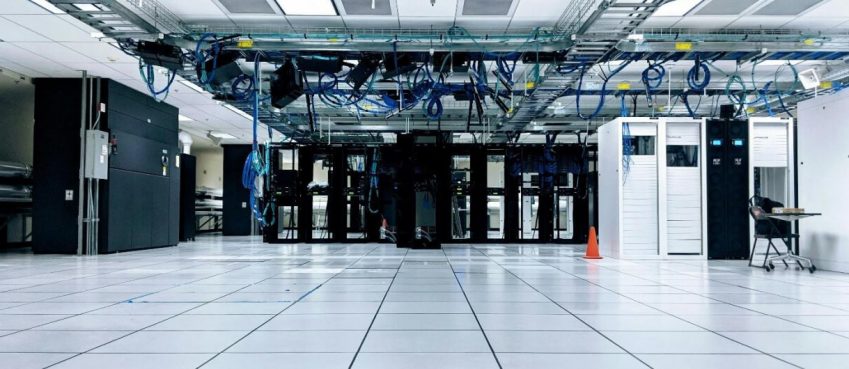
Cybersecurity is now a huge concern for many people, and cybercriminals are no longer exclusively targeting big companies and enterprises, but also small businesses and even individuals.
On the other hand, factors related to human errors like weak/non-unique passwords, vulnerability to social engineering (i.e. phishing) attacks, and others, remain some of the most common causes of cybersecurity breaches. So, if you want to keep your financial and personal information safe, you can’t solely rely on security software and infrastructures, but you also have to update your knowledge.
Here, we have compiled some of the actionable tips you can use right away for keeping your personal and financial information safe from cybersecurity threats.
Also read: Apple CarPlay Not Working? Here’s 7 Troubleshooting Tips
Most Common Causes of Stolen Information
Before we can discuss how you can protect your sensitive information, it’s best we learn about how cybercriminals actually steal information so we can also learn about how to mitigate these threats.
Here are some of the most common causes of stolen credentials and information:
- Weak and Non-unique Passwords
One of the most common causes of ransomware infections and data breaches is using weak passwords or using the same password for all your different accounts. By using weak passwords, you are vulnerable to brute force and credential stuffing attacks, which can lead to various other cyber attack vectors.
Use strong passwords that are at least 10 characters in length and include a combination of uppercase, lowercase characters, numbers, symbols, and spaces (if allowed by the platform).
Make sure to use a unique password only for one account. Also, there are various password manager tools that can help create and store complex, long passwords with ease, so there’s simply no reason not to use a strong, unique password at the moment.
- Malware infection
A very common cause of data breaches is when your system is infected by malware. Malware is a malicious program/software that can exploit vulnerabilities in your system and potentially other connected systems.
Be careful when accessing unsecured websites, and avoid clicking on email attachments from unknown senders. Also, invest in a good anti-virus/anti-malware solution.
- Application vulnerabilities
Hackers are always on the lookout for software and web application vulnerabilities to sneak into your network. Make sure all your software and applications are always up-to-date especially when there are any security patches.
- Social engineering attacks
Social engineering attacks are any form of attacks that involve human interactions, tricking users into making security mistakes, or giving away your personal information. For example, the hacker might assume the identity of your HR manager or CEO using a seemingly legitimate email address and asks for your financial information.
- Physical attacks
Albeit rare, it’s possible that a hacker might make their way into your building and directly access your system to launch an attack. Don’t solely focus on the digital side of your security, but also your physical side.
- Insider threats
It’s quite possible that an authorized user in your company might deliberately abuse your network and system’s security for personal gain or otherwise.
Preventing insider threats can be virtually impossible especially in bigger organizations, we can mitigate the potential damage, for example by compartmentalizing the information on your network. The basic idea is to limit the number of users that can access a specific file depending on needs.
Tips To Secure Your Financial and Sensitive Information
Use Stronger and Unique Passwords
We have briefly discussed the importance of using strong and unique passwords, but let us discuss it again just to emphasize its importance: your whole system’s security is only as strong as your password’s strength, period.
Yet, even using the strongest password won’t 100% guarantee your safety. After all, methods like brute force attacks will always be successful in guessing your password given an unlimited amount of retries and infinite time.
Our job is to make it as hard as possible for a hacker to guess this password, and change the password regularly before these attackers can ever guess it.
Again, use a password manager tool (a lot of them are free) to help you create and ‘remember’ really strong and unique passwords.
Multi-Factor Authentication
Still related to the practice of using a strong and unique password, using multi-factor authentication (MFA) or also called 2-factor authentication (2FA) is additional security when your credential is somehow compromised.
As the name suggests, multi-factor authentication asks for other information besides the password before the user can access the account. This information/authentication can be:
- Something you know: a PIN, a second password, answer to a secret question, etc.
- Something you are: fingerprint, retina/iris, face ID, etc.
- Something you have: a USB dongle (key), etc.
Many services, like Google’s accounts, offer free multi-factor authentication features you can use right away, so make the most of them. Google also offers an app for both Android and iOS that is completely free, and you can use it to secure your other accounts (yes, even non-Google ones).
There are also other authentication apps you can use if you don’t like Google’s for one reason or another. The bottom line is to secure your most sensitive accounts with a multi-factor authentication solution ASAP.
Also read: YellowStone Season 5: Part II Myths, Return Date & More! (A Complete Guide)
Invest in a Good Bot Mitigation Solution
Many cybersecurity attack vectors are performed by automated software or bots, attack vectors that are aimed at stealing data/information like brute force and credential stuffing attacks are also performed mainly by malicious bots.
So, if you can detect and manage these bot activities, you can also prevent these attacks.
However, today’s malicious bots are getting more sophisticated at mimicking human behaviors, so it can be difficult to differentiate bot activities from legitimate human traffic. On the other hand, we wouldn’t want to accidentally block activities coming from good bots like Googlebot.
This is where having a proper bot mitigation solution that can properly differentiate a bad bot from good bot/legitimate human traffic is very important. Solutions like DataDome, for example, utilizes AI and machine learning to analyze the traffic’s behavior so it can accurately detect and prevent botnet attacks with 100% autopilot functionalities.
Antivirus, Anti-Malware, and Firewall
Your basic cybersecurity infrastructure should consist of an antivirus/anti-malware solution and at least a basic firewall software. A firewall, in a nutshell, is a program that prevents unauthorized access to a network, and typically your computer (PC/laptop) already comes with a built-in firewall.
However, depending on your needs, this basic firewall might not be enough, so you might want to invest in a third-party firewall solution to better protect your system.
An antivirus/anti-malware, as the name suggests, is security software designed to detect and remove computer viruses and other variety of threats such as malware, spyware, keyloggers, ransomware, and so on.
It’s very important to get a proper antivirus and firewall to protect your system, so you can keep your financial and personal information safe at all times.
Educate Yourself to Defend Against Social Engineering Attacks
As discussed above, social engineering attacks like phishing and other methods are some of the most common causes of data breaches, identity thefts, and other attack vectors related to information/data loss.
Yes, if it’s an email about “lost inheritance for $1,000” and other obvious scams, you might not fall victim to it. However, don’t underestimate these scams, and always be extra careful when clicking any links or downloading any attachments from any emails (even if it seemingly comes from someone you know and/or a legitimate company).
Also, never give out passwords or any other sensitive information online or over the phone. If someone calls and says they are from a certain company you know, hang up and call the number listed on the official source (i.e. on the back of your credit card).
Secure Your devices
Always secure your devices, especially those that can access the internet. When you go online with any device, make sure you have anti-virus and other security software installed. If you have other people (i.e. children) using the computer, use software that can block potentially dangerous websites and apps from their use if necessary.
Also, back up your data regularly. While this won’t protect your data from being stolen, at least in cases where a hacker gained access to your device, you will still have a chance of not losing all your data.
Be extra careful when accessing public Wi-Fi, use a secure VPN solution if you must. Also, obviously, protect your devices from being physically stolen.
Last but not least, when you sell/throw away your older devices (including computers), make sure to erase all your data from your device before you part with them.
It’s important to note that erasing your data is not simply about placing your files in the virtual recycle bin. It’s best to perform a thorough wipe of the device’s hard drive or perform a factory reset.
Also read: Best CRM software for 2021
Conclusion
More and more cybercriminals are now actively targeting your financial and personal information, and it’s very important for you to know the best practices to protect your information.
Above, we have discussed some of the most common techniques hackers use to steal your sensitive data, and also some of the most effective ways you can use to keep your financial and personal information safe at all times.
Top 10 News
-
01
Top 10 Deep Learning Multimodal Models & Their Uses
Tuesday August 12, 2025
-
02
10 Google AI Mode Facts That Every SEOs Should Know (And Wha...
Friday July 4, 2025
-
03
Top 10 visionOS 26 Features & Announcement (With Video)
Thursday June 12, 2025
-
04
Top 10 Veo 3 AI Video Generators in 2025 (Compared & Te...
Tuesday June 10, 2025
-
05
Top 10 AI GPUs That Can Increase Work Productivity By 30% (W...
Wednesday May 28, 2025
-
06
[10 BEST] AI Influencer Generator Apps Trending Right Now
Monday March 17, 2025
-
07
The 10 Best Companies Providing Electric Fencing For Busines...
Tuesday March 11, 2025
-
08
Top 10 Social Security Fairness Act Benefits In 2025
Wednesday March 5, 2025
-
09
Top 10 AI Infrastructure Companies In The World
Tuesday February 11, 2025
-
10
What Are Top 10 Blood Thinners To Minimize Heart Disease?
Wednesday January 22, 2025







